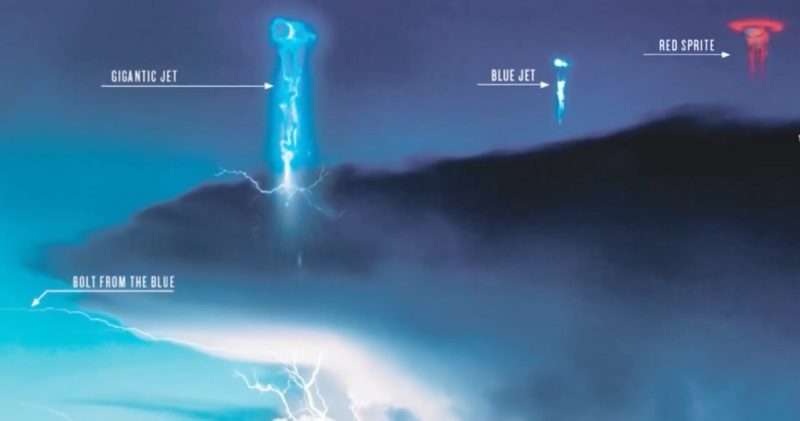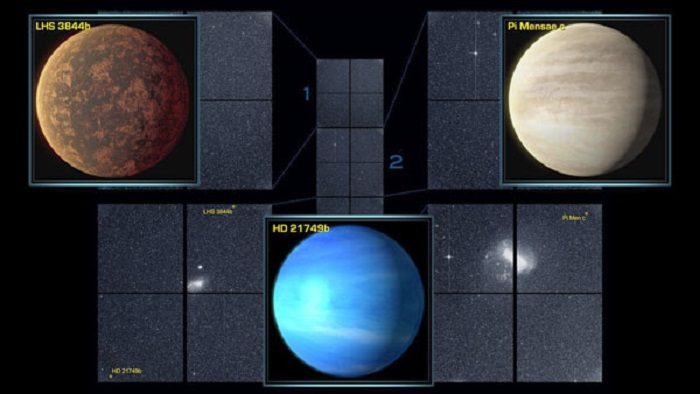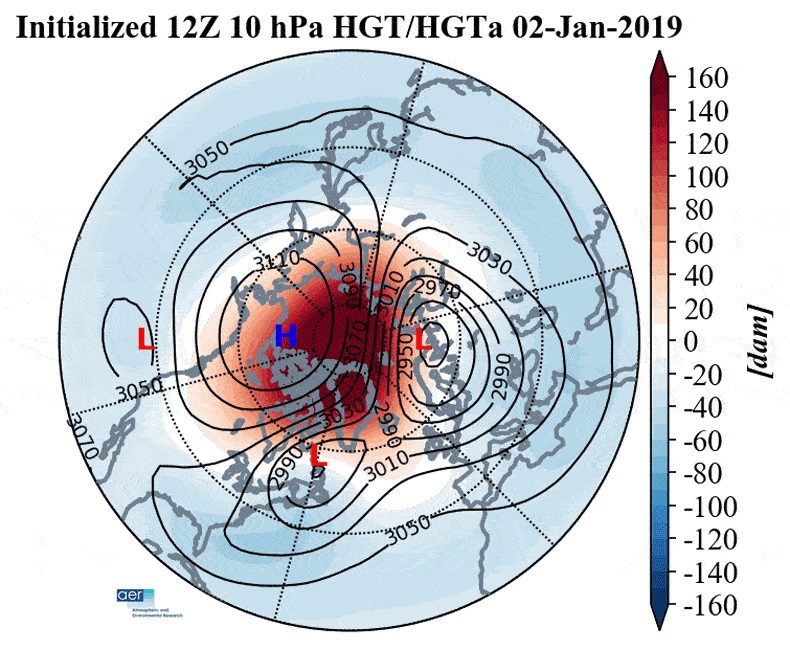
© NASA
We're all well acquainted with
lightning. The bright, brief flashes of electrical energy puncture the general monotony of Earth's sky. Their luminous dance, however, is restricted to within and below the planet's billowing thunderclouds. Often shielded from our view above is a light show of a more magnificent nature. Here can be seen transient bursts of luminous plasma, the most common of which is a sprite, resembling a red mushroom cloud between 50 and 100 kilometers above the surface. Lucky onlookers can also see blue jets, bold, yet wispy blue bolts extending upwards from the tops of clouds to as high as 40 to 50 kilometers.
Rarest of all the "lightning above the clouds" is the gigantic jet, which is like a supersized blue jet that transitions to the color red at the highest altitudes. Scientists at the Arecibo Observatory once
observed a blue jet extending from a thundercloud up to 70 kilometers, blazing at speeds of roughly 2,000,000 meters per second, more than forty times faster than ground lightning!
What sparks these bright behemoths?
This was the topic of a recent study published to Scientific Reports. Researchers from the Florida Institute of Technology and the University of New Hampshire made use of different radar variables, lightning data, and lightning simulations to theorize what exactly goes on within a thundercloud.

